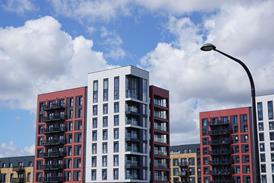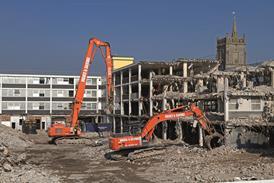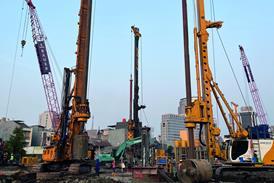Companies depend on their networks as aids to productivity, customer service and more flexible ways of working. They are making increasing use of the Internet, relying heavily on e-mail as a means of communication, adopting the efficiency of teleworking, 'hot desking' and video conferencing. Not surprisingly, there are more and more networks, and more and more people connected to them.
As if this is not straining the network infrastructure enough, new applications and technologies mean that networks have to carry more traffic than ever before. While there must be a limit to the amount of data that each user can handle, research shows that network managers expect more bandwidth to be required. There is little sign of the growth slowing.
When local networking first began in the 1980s, end-users typically needed capacity for less than 100 kilobits per second (kbits/s). By the early 1990s, l megabit per second (Mbits/s) was the norm. Now it's nearer 100 Mbits/s.
To put this in context, a typical e-mail would have taken one-eighth of a second to deliver at 100 kbit/s. Now 1000 e-mails can be delivered in the same time.
While it is difficult to predict how much bandwidth will be needed, it is predicted that by the year 2000 an increase will be demanded, driven by new applications such as multimedia, video imaging and collaborative computing.
The latter, in particular, means that increased capacity is required not just to the desktop, but at all levels in the network. Where previously all users could share the network cable, now networks have to act dynamically, for example using switches to send data on a variety of paths around the organisation.
Enter the Gigabit Ethernet
A promising solution to this potential bottleneck is called Gigabit Ethernet. It is essentially the same technology as the 10 Mbit/s or 100 Mbit/s Fast Ethernet, but scaled up to give more bandwidth.
It was developed as a standard for backbones, the links that join workgroup lans together – so the first standards are based around fast optical fibre cable. Single mode optical fibre can transmit Gigabit Ethernet over distances up to 5 km, while lower-cost multimode fibres provide links over at least 250 m.
The second phase of Gigabit Ethernet extends the standard to delivering data right to the desktop over copper wires. To make use of the wide installed base, it can use the Cat 5 structured cabling.
This is surprising because a Cat 5 specification only requires it to carry signals at 100 MHz. Essentially, the extra bandwidth is achieved by electronics in the network hub and the user's interface card. Four twisted pairs of copper wire are used to carry 250 Mbit/s each in both directions. Rather than simple data, the cables carry encoded data, and signal processing chips are used to remove unwanted signals. Silicon stitches the four channels of data back together into a single 1000 Mbit/s stream.
New Cat 5 standard
Gigabit Ethernet will impose some new constraints on existing Cat 5 installations. With the 1999 updates to EN 50173 (the European standard for structured cabling design) quality demands on connectors and cable are greater. As well as components, a new standard, EN 50174, is being developed to cover installation, maintenance administration and test methodologies. To ensure megabits-per-second of data are carried reliably, even greater care should be taken with installation. For new and existing Cat 5 installations, additional tests, including power summation figures, are needed – each of the four pairs of wires can be affected by the other three.
Similar improvements are required if Cat 5 cabling is to carry other network technologies such as Asynchronous Transfer Mode (ATM), which brings 155 Mbit/s of data to the desktop.
Cat 6 and Cat 7
Standards are nearing completion for Cat 6 and there are proposals for a Cat 7. This is being installed mostly in Germany, though UK users wishing to future-proof their operations may be assured that Cat 5 will accommodate most of the currently planned networking standards – at least for the next three to five years.
For some infrastructures, this will not suffice. Re-cabling means that users expect significantly greater 'headroom'. So, with a lifetime expectation of 20 years or more, quality is paramount.
Consider this: around 70% of network downtime can be attributed to the cabling infrastructure. The cost in lost revenue, productivity and customer goodwill as well as fault finding and rectification work is virtually incalculable.
What’s new in cables
General Cable Industries has launched a range of data cables, the Cat 5 utp Xtralan 350. Designed to meet the higher operating performances of modern business computing, the cable will operate at frequencies of up to 350 MHz over distances of up to 100 m or 100 MHz at distances of up to 300 m.Ortronics

Delta Crompton Cables

Connectix

Wavetek

BT says stick to Cat 5
British Telecom has stated its position in the debate surrounding structured cabling standards by stressing its commitment to Category 5 as the structured cabling standard. Peter Crouch, cabling marketing manager with BT Business Systems says: “We believe that BT’s structured cabling solutions, that meet with enhanced Category 5 standards, represent the optimum choice for our customers. “The modest amount of extra bandwidth spectrum provided by Category 6 is very unlikely to be utilised by businesses in terms of everyday voice and data requirements. And yet, the costs involved for customers are substantial.” BT’s enhanced Cat 5 systems will support Fast Ethernet, ATM155 and Gigabit Ethernet – the only high-speed lan technologies that are realistically likely to be used at the desk. The argument is backed up when compatibility between Cat 5 and Cat 6 is considered. Backwards compatibility from Cat 6 to Cat 5 is patchy at best and businesses thinking of installing Cat 6 systems to ‘future-proof’ will have to invest in new components throughout, as attempts to combine the two may cause system failures.Source
Electrical and Mechanical Contractor
Postscript
Karl Tryner is a structured cabling specialist with Krone.



















